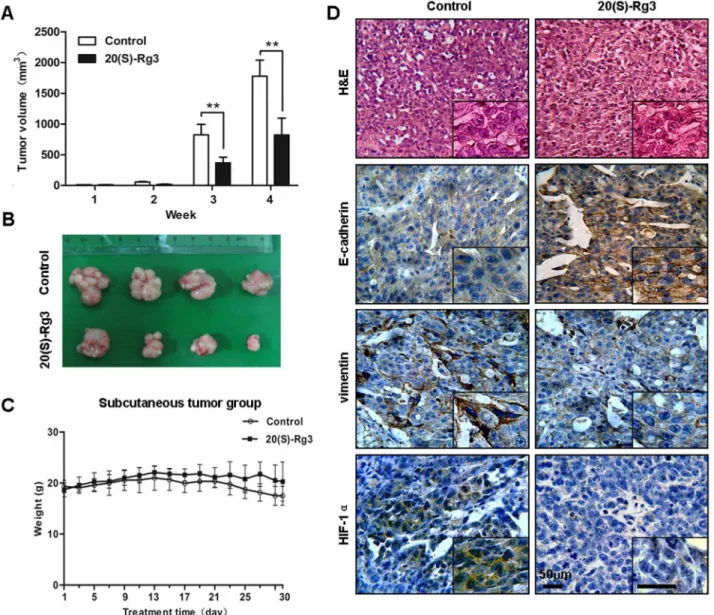Ginsenoside 20(S)-Rg3 targets HIF-1α to block hypoxia-induced epithelial-mesenchymal transition in ovarian cancer cells.
Texto
Imagem


Documentos relacionados
The scores obtained after the application of PRUNET to four biological examples, namely epithelial to mesenchymal transition (EMT), Th1-Th2 transdifferentiation (Th1-Th2),
Conclusions: Despite the first observation in human experimental malaria infection of a significant association between vaccine-induced in vitro growth inhibitory activity and in
In this study, we have shown that soluble factors secreted by activated PBMC of healthy donors including TNF- α , IL-6 and TGF- β can induce a paradoxical co-expression of EMT
Inhibition effects of induced NaTPI on gut proteinase In order to assess the potentially inhibitory effects of induced NaTPI on proteinase activity in the guts of larvae that fed
Comparison of HIF-1 α , PKM2 and ISCU1/2 protein expression in metastatic breast cancer cells and metastatic melanoma cells in the presence and absence of methyl sulfone and
indeed promotes EMT in these ovarian cancer cells, we examined the expression of E-cadherin and N-cadherin, two well-established epithelial to mesenchymal makers, in
Because we found that the combined treatment with casticin and TRAIL strongly induced cytotoxicity in gastric cancer cells, we next examined the effect of the treatment on
Similarly, our results showed that Rac1 Q61L increased HIF-1 a protein expression in MCF-7 cells while preventing Rac1 activity by Rac1 T17N and siRNA Rac1 increased the HIF-1 a